As the US celebrates 100 years since it created the National Park Service, take a look at the origins of the Wilderness Act and the spectacular places it protects. Video: NPS
Old Faithful is late. Almost 10 minutes have passed since Yellowstone National Park's most famous geyser was forecast to blow, and impatience ripples through the crowd as the geyser bubbles and gurgles in a series of false starts.
"Stage fright," a man in front of me quips. Finally it blows, and a great hydrant of water pours into the sky. For three minutes the geyser dances in waves of water then it settles again. The underworld has spoken.
In a couple of crucial ways, Yellowstone is a place that changed the world. It added this phrase "old faithful" to the English lexicon and, most fundamentally, it gave us the concept of national parks.
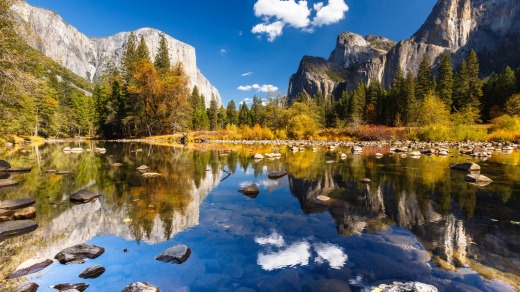
Today, there are more than 3000 national parks in 120 countries across the world, but it was here at Yellowstone, which extends across three US states, namely Wyoming, Montana and Idaho, that the first national park, as we know them today, was founded in 1872.
This year marks the centenary of the establishment of the National Park Service in the US (the world's first national park service was founded by the Canadians in 1911), 44 years after the creation of Yellowstone.
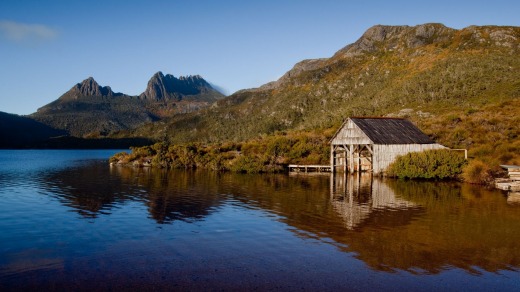
Closer to home, it's also the 100th anniversary of the first national parks in Tasmania, Freycinet and Mount Field.
The centennial in the US will celebrate the achievements of the past 100 years, but the NPS is billing it as an opportunity to look to the future of the national park. "It's about kicking off a second century of stewardship for America's national parks and for communities across the nation," the NPS has declared.
In 1872, it was ever so simple to create a national park. Only two or three people lived in the Yellowstone area, and the new park was given no funding or staff. The bill to create the national park passed through Congress in a matter of months, assisted by the fact that lands such as this and, later, Yosemite had little economic value – stupendous scenery is so often unworkable land. One sponsor of the Yellowstone bill described the area as "unfit for agricultural purposes", suggesting that park status "treads upon no rights of the settler".
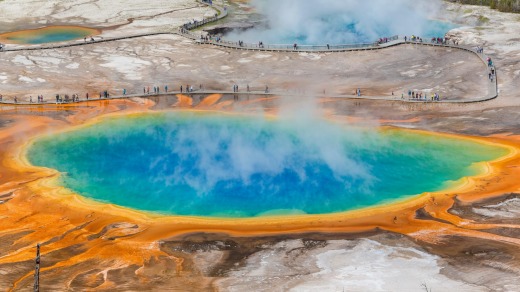
Indeed, Alfred Runte, environmental historian and author of National Parks: The American Experience writes: "The concept of useless scenery has virtually determined what landmarks the nation has agreed to protect and how it has protected them."
Regardless of the nobility, or otherwise, of the idea, national parks quickly spread across the globe. In 1879 Royal National Park at Sydney's edge became the world's second national park (Australia now has more national parks – about 600 at last count – than any other country). Canada's Banff National Park was created in 1885 to protect a series of newly discovered hots springs. Two years later, a Maori chief in New Zealand gifted his volcanic lands – Tongariro National Park – to the nation in an attempt to protect them against future settlement.
It was no coincidence that the spread of national parks followed the industrial revolution, because they were in part a reaction against growing urbanisation and industrial ugliness. National park represented nature as an escape, a notion that persists today.
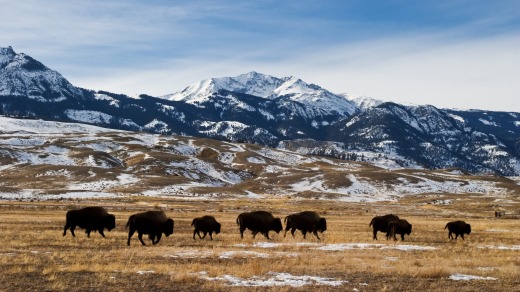
"A visit to a national park can have a profound emotional impact on a person," says Sally Barnes, Parks Australia's director of national parks. "These amazing destinations are sanctuaries where people can escape, relax and revitalise. They are also places of introspection where people reflect on the fact that we are here for a very brief period."
Indeed, as America's most revered early environmentalist, John Muir, wrote: "Mountain parks and reservations are useful not only as fountains of timber and irrigating rivers, but as fountains of life."
National parks remain as much places of recreation as parcels of natural protection. We know them for their trails and their viewpoints as much as for their intrinsic natural value. For many people, national parks are spaces of almost spiritual significance in our continuing detachment from the natural world.

Just the fact that they exist is comfort – the ennobling sense that we're protecting parts of the world from ourselves. "They reflect us at our best rather than our worst," Pulitzer Prize-winning author Wallace Stegner wrote of national parks.
National parks have always balanced the ideas of opportunity and threat, access and restriction. Yellowstone was established in part as a reaction against private tourism development at Niagara Falls, and yet grandiose hotels were constructed throughout the park in its early decades.
That balancing act continues today. The natural resources inside many parks are coveted for exploitation – illegal logging and poaching remain ever-present problems in many parks – while our own love for national parks may be a threat in itself.
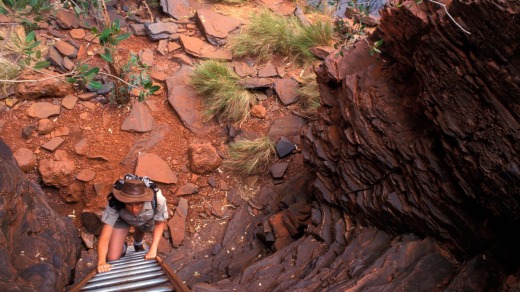
Almost 5 million people a year visit Grand Canyon National Park, and a staggering 16 million pour through England's Lake District, putting pressure on the land and infrastructure.
The opportunity/threat paradox is most evident in the growing expansion of private tourist developments as parks seek new funding models. Across Australia in recent years, state governments have proposed opening parks to sustainable private tourism development. In Tasmania alone, more than two-dozen private proposals are being assessed for approval.
The landscapes of national parks may always remain the same, but the human landscape surrounding them is ever-changing. Here are some of the best from Australia and around the world.

The Overland Track with Cradle Mountain Photo: Alamy
FOUNDED 1922
WHY WE LOVE IT Shelters some of Australia's most magically shaped mountains, as well as the country's deepest lake and its most famous long-distance bushwalking trail.
DON'T MISS Hiking around Dove Lake for in-your-face views of the unmistakable bowed figure of Cradle Mountain. Cruising across Lake St Clair, or hiking the length of the park on the 65-kilometre Overland Track.
NEED TO KNOW Buses run between Launceston and Cradle Mountain, and Hobart and Lake St Clair. In the north, stay at Cradle Mountain Lodge ; in the south, hang above Lake St Clair at Pumphouse Point (www.pumphousepoint.com.au).
Park entry: Up to 24 hours, $24 a vehicle.
See www.parks.tas.gov.au.

Karijini National Park's Hancock Gorge. Photo: Getty Images
FOUNDED 1969
WHY WE LOVE IT Deep gorges that cut through the twisted red rock and yellow spinifex of the Pilbara.
DON'T MISS Getting perspective at Oxer Lookout, peering over a junction of four gorges, and then descending into deep Hancock Gorge to be engulfed by the land. The Spider Walk takes a canyoning-style approach through the gorge, bridging narrow chasms and wading through the stream.
NEED TO KNOW Fly to Karratha and hire a vehicle for the 400-kilometre drive. Karijini Eco Retreat (www.karijiniecoretreat.com.au) has permanent safari-style tents, and there's a national park camping area at Dales Gorge.
Park entry: Up to 24 hours, $12 a vehicle.
See www.parks.dpaw.wa.gov.au.
See also: Shhh, these WA destinations are secret

Mount Ngauruhoe in Tongariro National Park. Photo: Alamy
FOUNDED 1887
WHY WE LOVE IT A trio of ominous volcanoes and the full playbook of volcanic activity: dazzling lakes, steaming craters, lava bombs.
DON'T MISS Hiking the Tongariro Crossing beneath the perfectly conical Mount Ngauruhoe. The walk passes through a theatrical show of vividly coloured lakes and craters. Pack prepared – the weather can be as wild as the scenes.
NEED TO KNOW Relive the glory days of grand national-park lodges at Chateau Tongariro (www.chateau.co.nz). The Department of Conservation has published a Tongariro Alpine Crossing Pocket Ranger app for hikers.
Park entry: Free.
See www.doc.govt.nz.
See also: The best day walk in New Zealand

Cruising Milford Sound.
FOUNDED 1952
WHY WE LOVE IT A wild coastline frayed with fiords, plus New Zealand's most famous hike.
DON'T MISS Cruising on Milford Sound, or getting further off the grid with a remote cruise on Doubtful Sound, seven times the size of Milford. Earn your Milford Sound views by hiking the four-day Milford Track, the so-called 'finest walk in the world'. Bring a raincoat – Milford Sound gets more than six metres of rain a year.
NEED TO KNOW There are regular buses to Milford Sound from Queenstown. Beat the day-trip crowds with a stay at Milford Sound Lodge (www.milfordlodge.com).
Park entry: Free.
See www.doc.govt.nz.

The Glowing Arch in Arches National Park. Photo: Getty Images
FOUNDED 1929
WHY WE LOVE IT Desert country with the world's largest concentration of rock arches. Rock just shouldn't look like this.
DON'T MISS Pick an arch, any arch – there are more than 2000 of them – but be certain to take in sunset at Delicate Arch. The world rarely glows this brightly. The precariously thin Landscape Arch, in the so-called Devils Garden, is claimed as the world's largest rock arch.
NEED TO KNOW Arches abuts the adrenalin-heavy Utah town of Moab, a four-hour drive from Salt Lake City. Find hotel listings at www.discovermoab.com/hotels.htm.
Park entry: $25 a car.
See www.nps.gov.
See also: The most awe-inspiring US National Parks

A coyote in Yellowstone National Park, USA. Photo: Alamy
FOUNDED 1872
WHY WE LOVE IT Unique mix of geothermal features and top-of-the-food-chain wildlife.
DON'T MISS Wildlife-watching in the Lamar Valley. Get a greatest-hits overview of thermal activity (geysers, multi-coloured lakes, mud pots, hot springs) at Fountain Paint Pots. Step carefully in Yellowstone – both the land and the animals can bite.
NEED TO KNOW The nearby airport at Bozeman, Montana, has connections to LA. For accommodation options within the park, see www.nps.gov.
Park entry: Seven days, $30 a vehicle.
See www.nps.gov.

Banff National Park. Photo: iStock
FOUNDED 1885
WHY WE LOVE IT Archetypal Rocky Mountain peaks, hundreds of glaciers, and duck-egg-blue glacial lakes.
DON'T MISS Soaking in Upper Hot Springs Pool, the sublime scenery of Moraine Lake, the waterfall-lined crevice of Johnston Canyon, winter ice-skating on Lake Louise.
NEED TO KNOW The town of Banff sits inside the national park and is about a 90-minute drive from Calgary Airport. The castle-like Fairmont Banff Springs (fairmont.com/banff-springs) is one of Canada's most evocative hotels.
Park entry: $9.80 a day.
See www.c.gc.ca.
FOUNDED 1969
WHY WE LOVE IT The contrast of Caribbean beaches backed by civilisation-swallowing jungle and the snow-capped peaks of the world's highest coastal mountain range.
DON'T MISS A day hike through jungle to the lost city of Pueblito – with howler monkeys and poison frogs about, this is the stuff of action movies. Wash away the sweat in the Caribbean Sea at postcard-perfect Cabo San Juan de la Guia beach.
NEED TO KNOW There are direct flights between Bogota and Santa Marta, at Tayrona's edge. Sleep in a native-style hut above Arrecifes beach at Ecohabs, www.ecohabsantamarta.com.
Park entry: $17.
See www.parquesnacionales.gov.co.
See also: Caribbean Dream

Walk the ice formations on Moreno Glacier. Photo: Andrew Bain
FOUNDED 1937
WHY WE LOVE IT The Andes encapsulated in the park's abrupt mountain shapes and multitude of glaciers.
DON'T MISS A day trip to Moreno Glacier, the glacier to end all glaciers – consider the adventurous option of a guided glacier hike. Walk to Laguna de los Tres at the base of mighty Monte Fitz Roy to see what 1200 metres of rocky summit towering above you looks like.
NEED TO KNOW Flights connect Buenos Aires with El Calafate, the base town for this park. Day trips radiate out from here to Moreno and other glaciers. Set yourself up in El Chalten, three hours' drive away, for Monte Fitz Roy hikes.
Park entry: $27 (Moreno Glacier); free (Monte Fitz Roy area).
See www.losglaciares.com.
See also: A sight you need to see for yourself

The Galapagos is a wildlife wonderland. Photo: AP
FOUNDED 1959
WHY WE LOVE IT In a word, critters. Nowhere else in the world does every step you take, and every stroke you swim, bring such an intimate brush with wildlife.
DON'T MISS Snorkelling into the channel through Kicker Rock to see a wealth of shark life. Hanging out on the white sands of Gardiner Bay among hundreds of Galapagos sea lions.
NEED TO KNOW Flights to the Galapagos operate from Quito and Guayaquil. Explore the archipelago by boat, cruising between islands – trips are run by numerous companies.
Park entry: $140.
See www.galapagospark.org.
See also: Wildlife like nothing else in this world
FOUNDED 1976
WHY WE LOVE IT Staggering views of Mount Everest and the high heart of what one early mountaineer called the "grandest 30 miles of the Himalaya".
DON'T MISS Trekking to Everest Base Camp, or through the side valley to Gokyo Ri peak for an arguably better view of Everest.
NEED TO KNOW Treks into the Everest area typically begin with a heart-stopping flight into Lukla from Kathmandu. You enter the national park near the village of Monjo. The trail is lined with lodges and teahouses.
Park entry: $45.
See www.sagarmathanationalpark.gov.np.
See also: It's crowded at the top

Tigers can be found in Corbett, India. Photo: Alamy
FOUNDED 1936
WHY WE LOVE IT Wildlife safaris, subcontinental style. India's first national park has one of the world's highest densities of tigers.
DON'T MISS Staying in Dhikala, where even the lodge is a wildlife-watching boon, looking over river flats dotted with wild elephants. Jeep safaris range out in search of the big cats – they're elusive in the heavily forested park, but that's part of the thrill.
NEED TO KNOW Ramnagar is the access town to Corbett. The Ranikhet Express train runs overnight to Ramnagar from Delhi. Tiger sightings are most likely around the end of the dry season (May/June).
Park entry: Free.
See www.corbettnationalpark.in.
See also: Raft of solutions
FOUNDED 1962
WHY WE LOVE IT Morning wake-up calls from gibbons, and the primordial atmosphere of the humid jungle inside Vietnam's oldest national park.
DON'T MISS Hiking to the 1000-Year-Old Tree, a giant oak somehow rising above the rampant jungle. Seeing the park's conservation work at the Endangered Primate Rescue Centre, where market-bound monkeys are rehabilitated for release back into the wild.
NEED TO KNOW Cuc Phuong is about a three-hour drive from Hanoi. Buses run to the park from Hanoi's Giap Bat station. There's accommodation in three places inside the park; the park website has details.
Park entry: $2.50.
See www.cucphuongtourism.com.
See also: Freewheeling around the rice paddies of Vietnam
FOUNDED 1980
WHY WE LOVE IT Raw mountain country – the name translates as 'Home of the Giants', a fitting label for this wild area containing northern Europe's two highest peaks.
DON'T MISS Norway's most popular hike along Besseggen Ridge, a narrow and sharp ridge separating two glacial lakes of differing colour. Summer glacier skiing on the slopes of Galdhopiggen, Norway's highest peak.
NEED TO KNOW Jotunheimen is a four-hour drive from Oslo. For an evocative stay, the Turtagro Hotel (www.turtagro.no) has a long and storied mountaineering history. The summer ski centre (www.gpss.no) runs from May to October.
See www.Jotunheimen.com

Ambleside in the Lake District. Photo: Getty Images
FOUNDED 1951
WHY WE LOVE IT Wordsworth, Wainwright and water – with 12 of England's largest lakes, this is the quintessential piece of poetic English landscape.
DON'T MISS Cruising on Windermere or Ullswater, and following in Alfred Wainwright's footsteps across almost any walking trail – perhaps the climb to Scafell Pike, England's highest peak, or the 112-kilometre Cumbria Way, cutting through the park's heart.
NEED TO KNOW It's about a 90-minute drive into the Lake District from Manchester. The national park website has an accommodation booking service.
Park entry: Free.
See www.lakedistrict.gov.uk.

Santo Stefano di Sessanio, Italy. Photo: Alamy
FOUNDED 1991
WHY WE LOVE IT Immense alpine plains, Italy's highest peak south of the Alps, and timeless hilltop villages.
DON'T MISS Wandering where whim takes you through the wildflowers on track-free Campo Imperatore, Italy's largest alpine plain. Exploring the ruins of Rocca Calascio, the country's highest fort.
NEED TO KNOW The park is a two-hour drive from Rome. Stay in the former Medici-owned hilltop village of Santo Stefano di Sessanio, www.sextantio.it/santo-stefano, inside the park, where homes have been converted into a 'diffused hotel' sprinkled through the village.
Park entry: Free
See www.parks.it.
See also: Walking up an appetite
FOUNDED 1914
WHY WE LOVE IT Switzerland's only national park shows the power of rehabilitation – a century of regrowth and returned wildlife far from the usual roll call of the Eiger, Matterhorn and Jungfrau.
DON'T MISS A network of 80 kilometres of hiking trails. The short hike through the alpine plain of Champlonch is a great introduction to these mountains. Scan the slopes above for chamois, ibex, red deer and golden eagles.
NEED TO KNOW Base yourself in Zernez on the park's edge; it's about two-and-a-half hours by train from Zurich. Swiss efficiency doesn't end at the park entrance, with a bus network that'll drop you at any trailhead.
Park entry: Free.
See www.nationalpark.ch/en.
FOUNDED 1916
WHY WE LOVE IT It's African savannah meets Yosemite – the epic scale of the Amphitheatre escarpment, plus the world's second-highest waterfall and a smattering of African wildlife.
DON'T MISS The Amphitheatre is as good as day walks get, threading into an ever-narrowing gorge beneath an eight-kilometre-long line of cliff walls. Hike above the escarpment to find 948-metre Tugela Falls.
NEED TO KNOW Royal Natal is about a three-hour drive from Durban. Get an Amphitheatre view from your room at Thendele (www.royalnatal.info/thendele-camp.htm), right beside the Amphitheatre trailhead.
Park entry: $3.50-$4 a vehicle.
See www.royalnatal.info.

Gelada baboons in the Simien Mountains National Park, Ethiopia. Photo: Alamy
FOUNDED 1969
WHY WE LOVE IT A living museum of rural life, wildlife and one of the world's most spectacular escarpments.
DON'T MISS Trekking towards the summit of Ras Dashen, Ethiopia's highest peak. The trail follows the rim of the range's escarpment, which drops up to 2000 metres into the lowlands. The mountain shapes are surreal, as are the grass-grazing gelada baboons and endemic lobelias.
NEED TO KNOW The Simiens are usually reached through Gonder, which has flight connections to Addis Ababa. Joining a guided trek is recommended – World Expeditions (www.worldexpeditions.com) and Exodus (www.exodustravels.com) operate trips here.
Park entry: $6 a day.
See www.simienpark.org.
See also: Top 10 easy mountain adventures

Sunset snacks on a game drive in Kruger National Park. Photo: iStock
FOUNDED 1926
WHY WE LOVE IT The Big Five on tap in an epic expanse of African wilderness. It's a field guide in motion.
DON'T MISS Dusk wildlife drives offered by most rest camps in the park – yes, that shape ahead probably is a lion soaking up the last heat from the road. Getting a very personal look at the park by hiking one of the seven ranger-led, multi-day Wilderness Trails.
NEED TO KNOW There are flights to Skukuza Airport, inside the park, from Johannesburg and Cape Town. The park website has accommodation bookings and links to the Wilderness Trails.
Park entry: $25 a day.
See www.sanparks.org
There's nothing like entering a national park and being immediately wowed by nature – stepping up to the rim of the Grand Canyon; emerging at Tunnel View in Yosemite.
In a great number of national parks, iconic and threatened species have thrived under protection. Serengeti, Kruger and Galapagos are among those parks known almost entirely for their treasuries of wildlife.
National parks often preserve cultural remains as well as natural sites. Kakadu's estimated 5000 Aboriginal rock-art sites and Mesa Verde's cliff dwellings are prime examples.
Landscapes don't have to be pristine to be preserved. In places such as of Swiss National Park, it's the recovery of the land from mining and logging, and the return of once locally extinct animal species, that tell the park story.
Extensive walking-track networks, picnic grounds and other infrastructure encourage visitor use, appreciation and love for a national park.
Coastal perfection on the white sands and granite headlands near Esperance.
Australia's largest island national park is a place of empty tropical beaches, waterfalls, and the highest mountains of any Australian continental island.
Cooling, rugged gorges slicing apart one of the world's oldest mountain ranges.
Wildlife and wild coast – fur-seal colonies to the Remarkable Rocks – at the western end of Kangaroo Island.
Wind-scoured formations along an ancient lake bed, and the site of the world's oldest-known cremation.